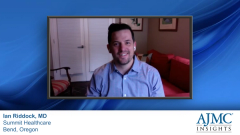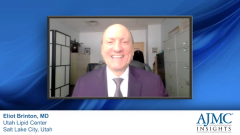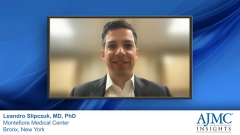
Appropriate ASCVD Treatment Outside of Closed Health Systems
Dr Slipczuk offers strategies for sharing information and guiding appropriate ASCVD treatment both within and outside closed health systems.
Episodes in this series

Leandro N. Slipczuk, MD, PhD: To share information, it’s key to electronic medical records. In the beginning, we have a lipid panel check. Believe it or not, there are a lot of admissions for ACS [acute coronary syndrome] when there’s not even a lipid panel being checked. If we don’t even know where patients are, then we won’t be able to reach the target or treat them properly. A few things about this. We need to make it mandatory that any patient who goes to the catheter lab, or who goes for bypass surgery or PAD [peripheral arterial disease] surgery, has a recent lipid panel. That’s point number 1. We have that information.
Then we need to make sure they have at least 1 visit within the hospital network after they leave the hospital, so we can educate the patient and make sure they have the follow-up lipid panel check. If they go somewhere else, then they’ll carry on that information. This can be done in person but also as a televisit. With the development of telemedicine, we can do this follow-up as a televisit, and the patient doesn’t have to come to the clinic. There are a lot of opportunities with technology to reach a wider patient group.
[In trying to] identify patients at high risk of readmission, in the ASCVD [atherosclerotic cardiovascular disease] world, we’re lagging a little behind. When you look at some implementations, for example, from our heart failure colleagues, there was a huge movement trying to decrease readmissions for heart failure, initially pushed by Medicare. Many hospitals adapted to this. This works differently in different institutions. In some institutions, once a patient has been readmitted, they get assigned to the heart failure group. We have programs, for example, in which a group of NPs [nurse practitioners] will follow these patients closely—the ones who get readmitted frequently—to make sure they’re taking the right medications and that they understand their diet. In this way, we’re trying to avoid this occurrence of readmissions. But in the ASCVD world, we’re lagging. This is a huge area for improvement.
To have a successful multidisciplinary team, everyone must understand the importance of what we’re doing. Having a motivated team, with everyone understanding the value of their work, makes a big difference. Part of it is in the education in the group, that everyone working understands their role and how to do that part properly. It’s essential that we don’t have a physician alone doing this. There’s a lot of value from pharmacists in this also. They can explain the worries that patients have about adverse effects and medication interactions. Having a pharmacist working closely with this is essential. That makes a huge difference. We’re lucky to have some of the highest people in our pharmacy very involved in this process. They see the value, and they’ve supported our movement into bringing this clinic to work and to bringing these patients to goal.
[There are] also the nurses and nurse practitioners. My prior institution had a dedicated nurse for this, and I have 1 here as well. The nurses are usually the first contact with the patient. Having a nurse who can answer questions and build our relationship with the patient will make a big difference in compliance and the patient’s understanding of their condition. Each person in the team is essential in reaching the goal.
For organizations that like this concept and are trying to set this up, step No. 1 is finding a champion. As I was saying, try to have a lipid clinic or a lipid specialist who is identified. We started calling them lipid clinics, and now it’s evolved more into the concept of a cardiometabolic clinic because it’s not just for lipids. It’s also for diabetes and to manage hypertension. [You need to have] an identified clinic that people can refer to. Finding the champion, finding how these patients can be referred, would be the second step. [We need to find] how they can be referred from the outpatient setting and how patients are identified as an inpatient can help them transition into this clinic.
The next step is to get data from the institution, finding out what problems we have, what patients are not reaching the goal, and identifying the high-risk patients. Once we identify that, then we can go to the next step: finding these patients actively and trying to get them to go. There has to be strong support from the administration to see the value of this, to push resources to reach the level that we need to treat these patients.
This may seem like a big investment, but when we look at the cost of ASCVD in the United States, it’s expected to reach over $300 billion by 2035. It’s a huge cost for the country. As institutions and health care transition to value-based care, this will be important. Decreasing readmissions for heart failure is important, but it’s also important that we make sure patients reach goal. [We don’t want them to have] recurrent events because we haven’t met the goal, especially with so many options in therapy. Ten or 20 years ago, it was a different scenario. But now there are so many options that if a patient tries 1 statin and doesn’t reach a goal, then we’ll fail at our job. It’s important that someone is trained to know all the options to reach the best one for each patient.
This transcript has been edited for clarity.
Newsletter
Stay ahead of policy, cost, and value—subscribe to AJMC for expert insights at the intersection of clinical care and health economics.









































